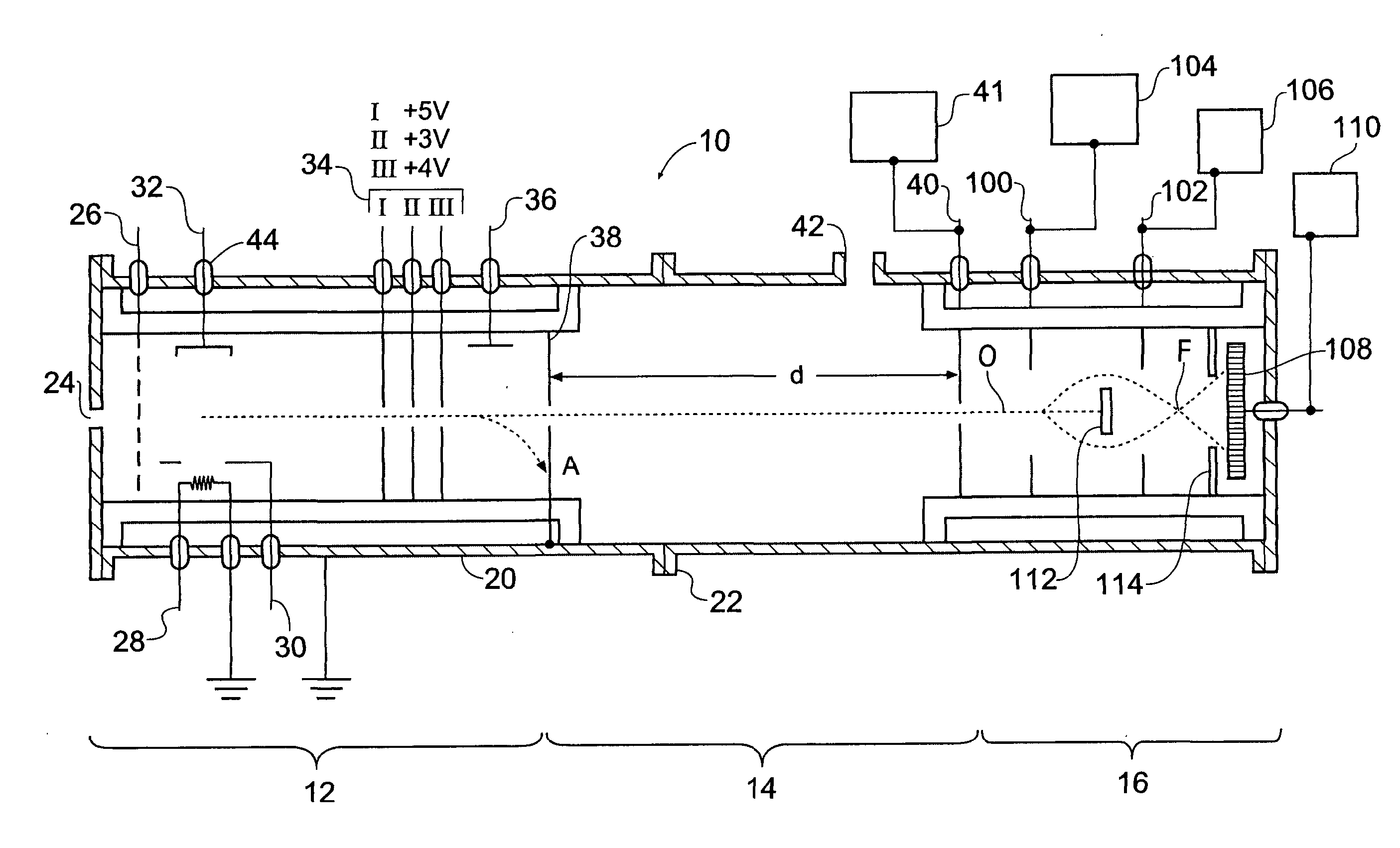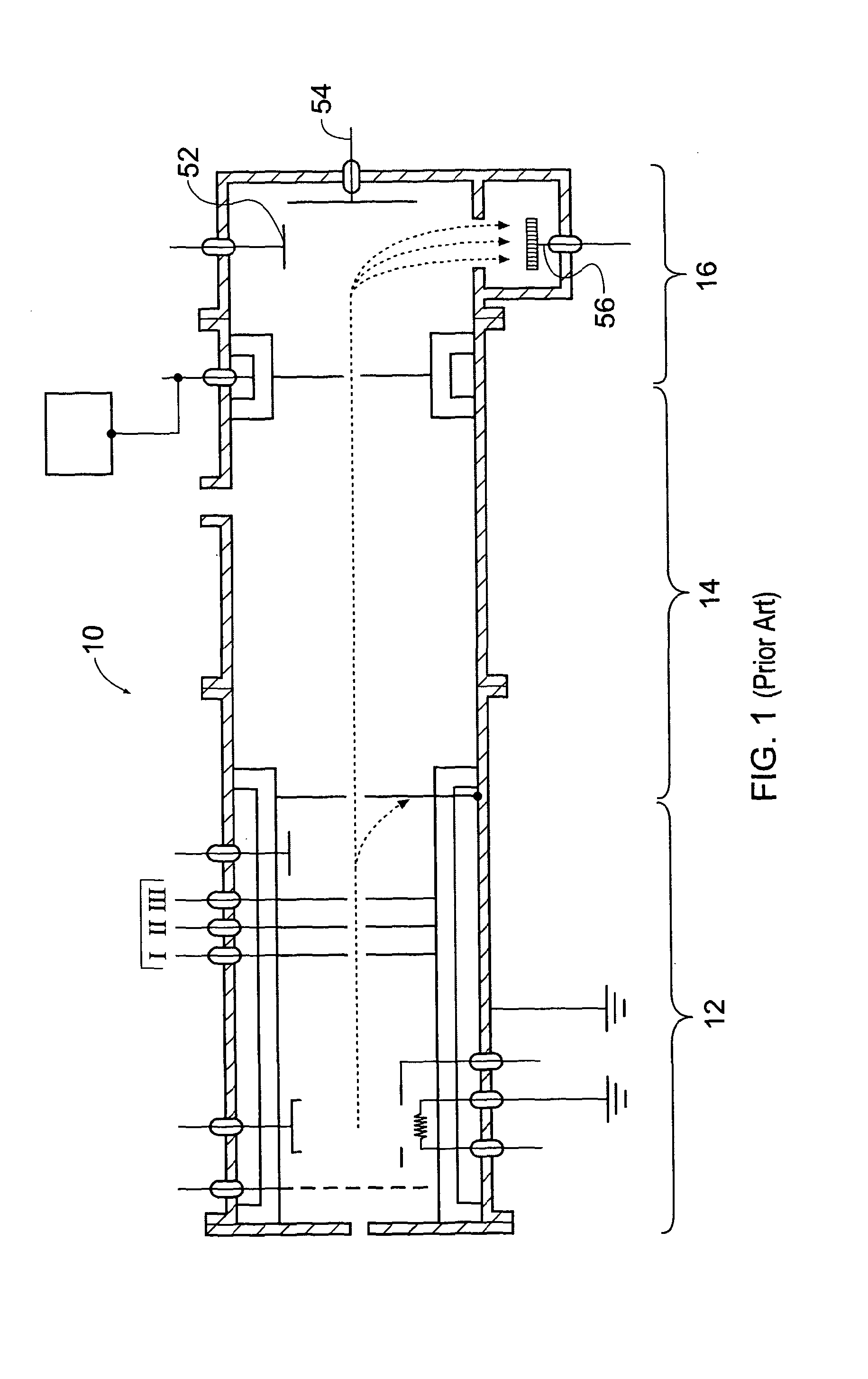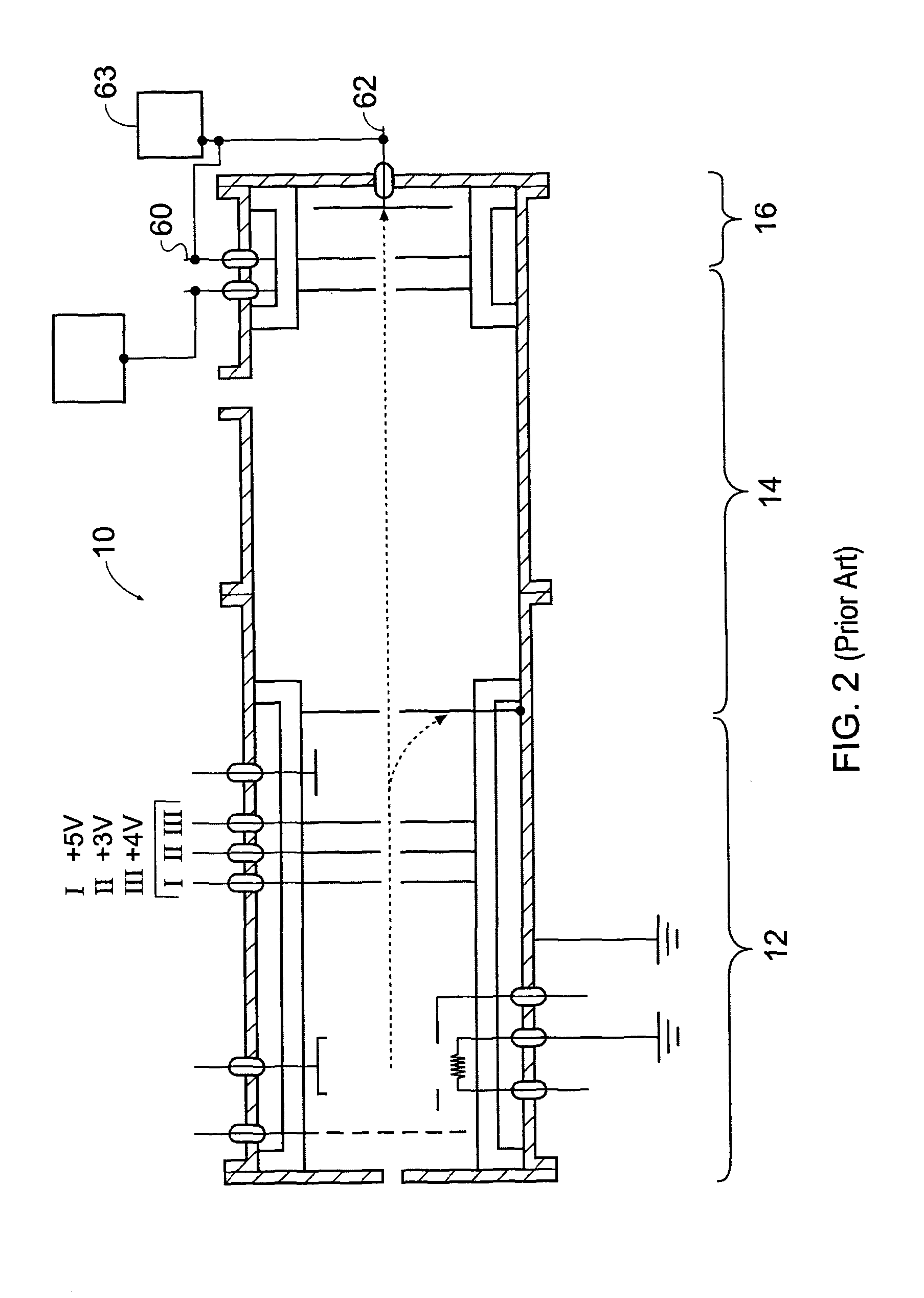Mass spectrometers and methods of ion separation and detection
a mass spectrometer and ion detection technology, applied in the field of mass spectrometers and also to methods of ion separation and ion detection, can solve the problems of reducing sensitivity, reducing sensitivity, and losing ions to the detector
- Summary
- Abstract
- Description
- Claims
- Application Information
AI Technical Summary
Benefits of technology
Problems solved by technology
Method used
Image
Examples
Embodiment Construction
[0032]FIG. 3 shows a schematic cross-sectional view of a mass spectrometer according to the present invention. The mass spectrometer will be described in terms of spectrometry of a gas, but the invention is equally applicable to non-gaseous analytes.
[0033]A mass spectrometer 10 has a body 20 formed primarily from stainless steel sections which are joined together by flange joints 22 sealed by O-rings (not shown). The body 20 is elongate and hollow. A gas inlet 24 is provided at one end of the body 20. A first ion repeller electrode 26 having a mesh construction is provided across the interior of the body 20, downstream of the gas inlet 24. The mesh construction is highly permeable to gas introduced through the gas inlet 24, but acts to repel ions when an appropriate voltage is applied to it.
[0034]An ioniser comprising an electron source filament 28, an electron beam current control electrode 30 and an electron collector 32 is located downstream of the first ion repeller electrode 26...
PUM
 Login to View More
Login to View More Abstract
Description
Claims
Application Information
 Login to View More
Login to View More - R&D
- Intellectual Property
- Life Sciences
- Materials
- Tech Scout
- Unparalleled Data Quality
- Higher Quality Content
- 60% Fewer Hallucinations
Browse by: Latest US Patents, China's latest patents, Technical Efficacy Thesaurus, Application Domain, Technology Topic, Popular Technical Reports.
© 2025 PatSnap. All rights reserved.Legal|Privacy policy|Modern Slavery Act Transparency Statement|Sitemap|About US| Contact US: help@patsnap.com



